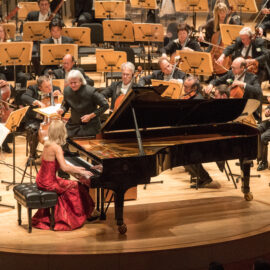Happy Lunar New Year!

The data-miners, the demographers, the digerati all tell us that just over a fifth of the world’s population share a lunar calendar as part of their cultural heritage. Though the solar-based Gregorian calendar is universally accepted in the modern world, about 1.5 billion people also mark a lunar new year based on ancient traditions. And if we look back far enough into prehistory, this tradition is part of everyone’s heritage…After all, when darkening days and colder temperatures were a terrifying phenomenon, the cycles of the moon’s seeming rebirth were reassurance from the heavens to all of our ancestors.
The modern Gregorian calendar ended much uncertainty and imprecision, but it certainly didn’t end the richness of the lunar calendar traditions around the world. Chinese traditions gave rise to what is perhaps the world’s most popular celebration of any kind: Chinese New Year. This year, January 22 marks the beginning of a period of revelry and ceremony designed to honor the past, propitiate good fortune, and greet the lunar new year with gaiety. The festivities officially last for 15 days and are filled with the sounds of music and fireworks. It’s estimated that around the world, more incendiaries are ignited during Chinese New Year than during the rest of the year combined.
In keeping with the Chinese zodiac, each year is keynoted by one of twelve animals whose traits help determine our fortunes. The coming year is a year of the rabbit, as were 2011, 1999, 1987, and so on. Persons born in a year of the Rabbit are called “Rabbits” and are believed to be vigilant, witty, quick-minded, and ingenious. The rest of us should pay particular attention to these skills throughout the coming year!
Other Asian cultures also observe lunar new years, including Vietnam, where the observance is known as Tết, or Tết Nguyên Đán. This most sacred of Vietnamese festivals marks the arrival of spring, and is often celebrated with a family vacation of six to nine days. Decorating the home with peach or apricot blossoms is traditional during this period, representing the hope for an auspicious year to come. According to the Vietnamese zodiac, January 22 ushers in the year of the cat.
In South Korea, Seollal is a three-day national holiday commemorating the first day of the Korean calendar. This is a time for visiting relatives, wearing traditional garb, performing ancestral rites, eating traditional foods, and playing traditional folk games to greet the new year joyfully.
It’s also worth noting that the Hebrew calendar is based on a combination of solar and lunar cycles, with some years including a “leap” lunar cycle. The Jewish new year new year comes in autumn, during a period of solemn religious observance. These are the High Holy Days of Judaism, which begin with Rosh Hashana, a joyful observance of the new year, and culminate with Yom Kippur, a day to atone for the sins of the past and to begin anew.
Of all these new year’s observances, the most spectacular and most public in the U.S. is the Chinese New Year, familiar to everyone lucky enough to live in a city where the flamboyant Dragon Parade takes place. Friends and neighbors from all over town (and of all ethnic backgrounds!) gather to witness the fantastically colorful, loud, winding procession as the dancing dragon—actually a jointed construction borne along in caterpillar fashion by concealed dancers—makes its way through the streets. More than just entertainment, the parade represents the dragon’s grace and strength, qualities we hope to learn by example.

In a time when we strive to value and celebrate diversity, these varied traditions have helped us meet and learn about each other. Their spirit is embodied in shorter musical excerpts and songs from many lands that honor relatives, friends, ancestors, cultural heritage, and national pride in music as they propitiate aspirations for the months to come.
Appropriately, we greet the lunar new year with compositions ancient, modern, and in-between. For those of us less familiar with the traditions of Asian music, its expressiveness is especially fascinating. It focuses on the sound of individual notes as they begin, bloom, and fade, more than on melodic resolution. For experienced listeners, even the material of an unfamiliar musical instrument—in China they fall into seven categories including wood, stone, clay, gourd, bamboo, silk, and hide—says something about the meaning of the music played on it.

On Jan. 28, Pacific Symphony presents its annual Lunar New Year featuring joyous music, festive dance and a delightful fusion of musical traditions from East and West. Music Director Carl St.Clair conducts. For more info or tickets, click here.
And you won’t want to miss the O.C. Lantern Festival presented by Pacific Symphony and the South Coast Chinese Cultural Center on Feb. 18. This free family-friendly festival commemorates the end of the Lunar New Year celebration with music, dance, art making, riddles, and food. For more info or to reserve free tickets, click here.

